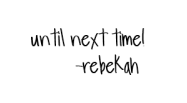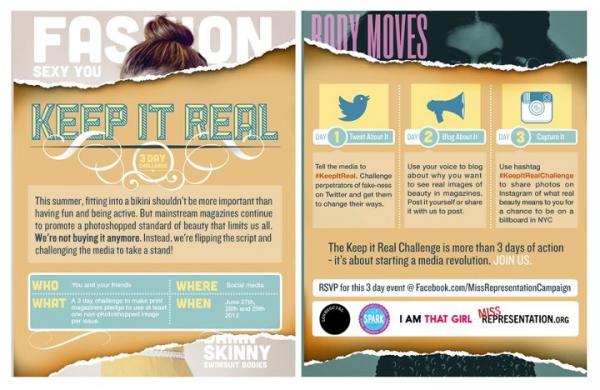Welcome to day two of the Keep it Real Challenge! What is the challenge, you say? Well, let me tell you.
Individuals and organizations have been asked to use social media (primarily Twitter, blogs, and Instagram) to encourage a positive and realistic portrayal of beauty in the media. On day one, June 27, tweets were sent to fashion magazines and their editors (using the hastag #KeepItReal) asking them to include at least one non-digitally altered image in each issue of their magazine. Today, bloggers have been asked to use their blogs as a platform to discuss the issue and offer their own insights.
You can read all the details of the Keep it Real Challenge here: Keep it Real
I also encourage you to read the story of the awesome fourteen year-old girl from Maine who inspired the challenge. Click here to read about Julia Bluhm.
I have been so inspired to see people (and a fourteen year-old girl, no less!) pushing back against the unrealistic and often very negative images of women we see every. day, in every form of media. Being bombarded with image after image of blemish-free, cellulite-free, PORE-free digitally altered models takes an obvious toll on the self-esteem of the media consumer, be they man or woman or child.
Let's talk about Barbie for a minute (groan, I know, I'm sorry). Barbie has always been under fire for creating an unrealistic standard of beauty. But let's get real; Barbie is literally an unrealistic standard of beauty. If a person did look like that, it would not only not be pretty, it would be biz-arre.
The problem with digitally altered photos in magazines is that they represent the same unattainable beauty Barbie does but use real women to do so. A woman without pores or imperfections simply does not exist in reality. But by airbrushing away these features on models and celebrities, the media insinuates that she does. You could, if you only used product x, y, or z. Even the most critical of media consumers can wind up comparing themself to something that does not and cannot exist outside of a computer program!
That's why it's imperative that editors begin to integrate images of non-digitally altered women into their publications. They must provide a baseline of reality and offer a diverse range of images. In turn, we must be critical consumers of media and always question editorial and advertising choices.
Thanks for reading!

... read the full post and reader comments



